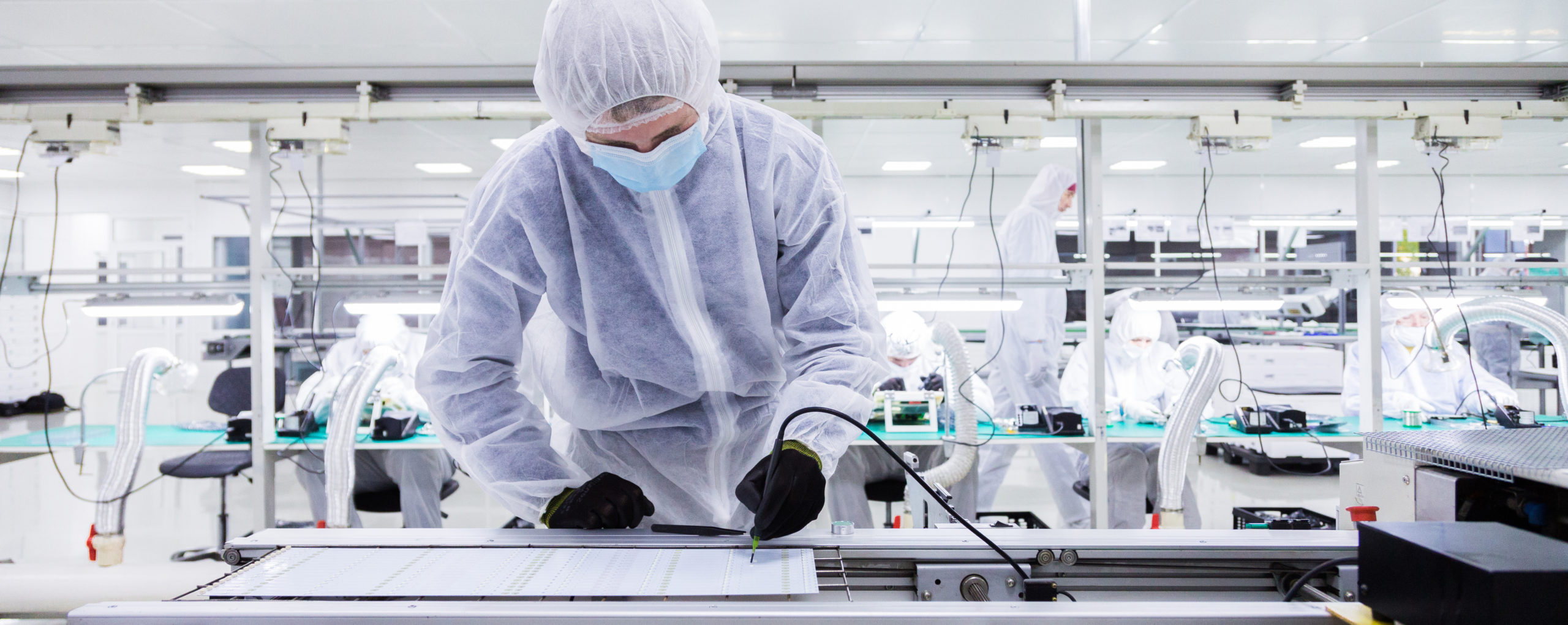
RECOMMENDED READING
Operation Warp Speed (OWS) was a nearly miraculous COVID-19 vaccine success story. What is less widely recognized is that it has also unlocked a biotech revolution. The mRNA technologies that OWS helped bring to market have numerous potential applications, ranging from cancer treatments to hormone replacement therapies to radical new ways to treat infectious disease. But it is far from clear if the industry’s future growth, particularly in manufacturing and biodefense, will primarily occur in the U.S. or if it will migrate to countries with explicit industrial policy support—namely China.
Warp Speed was a triumph of industrial policy, and its details offer a path to rebuilding American production of key medical products and industrial capabilities more generally. Investing in only basic scientific research—the traditional strategy of the United States—is not sufficient. Before Warp Speed, the development of mRNA technology saw sputtering progress. Though there were early efforts to commercialize this invention, it took Warp Speed to bring mRNA vaccine technologies to the market at scale.
The pre-Warp Speed Vaccine Industry
The commercial vaccine world was a sleepy one until very recently. Vaccines were still largely based on the age-old method of growing a pathogen and then putting either the live or dead bug, or a protein fragment derived from it, into the human body to train the immune system. The manufacturing process, which typically still involved growing the virus in chicken eggs, was difficult to control, subject to variability, not easily scalable, and took a long time.
By 2010, the U.S. vaccine industry had consolidated into four major pharma companies, compared with about 30 manufacturers in the 1970s. Market concentration is often industry-specific; it is too simplistic to claim that lax anti-trust enforcement is always the cause.
For vaccines, the drivers of consolidation were partially economic. Preventing infectious disease is not a good business: vaccines don’t require daily usage. But the causes were also regulatory. Careful FDA monitoring of production made it too burdensome for mom-and-pop vaccine manufacturers to operate. The resulting consolidated industry intentionally avoided new manufacturing processes, which required huge capital investments and brought immense regulatory risks.
DARPA, the Defense Advanced Research Projects Agency, discovered this industry resistance to new vaccine technologies firsthand when it attempted to develop vaccines using mRNA. As early as 2010, DARPA began a program to investigate and fund this radical new approach to vaccines, but traditional pharma companies weren’t interested in developing this technology further, at least that time.
Then, in 2013, DARPA made a $25 million grant to the recently founded biotech firm Moderna Therapeutics. The company would make vaccines using mRNA technology (notice the last three letters in Moderna’s name).
Dr. Dan Wattendorf, who spearheaded DARPA’s mRNA vaccine work, explains: “DARPA’s early investments de-risked the technical problem. But they didn’t solve the fundamental capital shift we needed. Though mRNA for vaccines was clearly a transformative technology, there was no capital or industrial policy vision for scaling it up. The funding of research and development and clinical trials to develop a new manufacturing process takes billions of dollars.”
When COVID-19 hit, “the U.S. government flexed its muscles and capital rushed into the system,” Wattendorf says, “that capital was critical for the scale-up in manufacturing and distribution and partnerships for clinical trials. But as much as OWS was a success, reactive emergency funding is not a predictive way to plan.”
Warp Speed Scales Up
The industrial policy efforts by OWS were extensive and went well beyond funding. They included prioritizing vaccine technologies for development, supporting clinical trials, building manufacturing capacity, mapping supply chains, sharing technology, implementing the Defense Production Act, project management, logistics, and guaranteed demand. Though Warp Speed involved public-private partnerships, to claim OWS’s success was simply the product of the market is as absurd as arguing that the Manhattan Project was fundamentally a free market exercise (though it too involved private companies).
It is also ridiculous to think that the handful of industrial policies that the U.S. economics establishment deems acceptable, such as better infrastructure, broadband for all, or more education, could on their own have achieved Warp Speed’s results.
Dr. Michael Callahan, an infectious disease specialist at Massachusetts General Hospital and Harvard Medical School and special adviser on COVID-19 to the assistant secretary of preparedness and response (ASPR), emphasizes just how radical these results were: “No one is going back to the 11-year development cycle.”
He explains that industrial policy efforts were key to Warp Speed’s success: “OWS completely took away R&D risk and regulatory risk,” Callahan says. He adds, “Warp Speed could not have happened if the technology had not been developed to move this quickly. We got very lucky with mRNA.”
Where Is the Industry Headed—Literally
Warp Speed did the heavy lifting for FDA approval of mRNA technologies, and also demonstrated their medical effectiveness. Dr. Matthew Hepburn, Col. (Ret.), who joined Warp Speed on day one as the DoD lead for vaccine development, says, “We should not go back to business as usual after the pandemic. We should take the lessons and disruptive innovations learned from Warp Speed and put them into medical advances.”
These innovations can be applied to more than just infectious disease. mRNA technology directs cells to make protein—insulin, human growth hormone, and thyroid hormones are all proteins. Through the efficient factory of the human body, mRNA technology could someday produce long-lasting insulin or better growth hormones. The adenovirus-based vaccines (this is a different technology from mRNA and consists of adenovirus that has been engineered to give the signal for an antigen), as they become increasingly precise, can be used to target cancer using an immune response.
The new vaccine technologies will transform how we treat infectious disease. There are already trials underway for a malaria vaccine. Next, there’s hope for an mRNA technology that can make “express antibodies,” bypassing the need for vaccination by offering immediate protection. Dr. Hepburn says, “I hope that infectious diseases will be much better controlled in the future. With new technologies we should be able to aspire to take pandemics off the table.”
Despite this success, there is no particular reason to assume that going forward, the manufacturing of biologics will be centered in the U.S. The Biden-Harris administration’s initial response to the global pandemic was to give away IP rights through the TRIPs waiver. Regardless of the waiver’s outcome, mRNA technology has already been licensed to China, and Chinese industrial policy is heavily targeting this technology.
Where is the U.S. industrial policy vision to further the technologies unleashed by Warp Speed—particularly the advanced manufacturing required to support them as well vaccines with bio-defense applications where there is no obvious market? OWS shows that industrial policy can work here. Maybe it’s time the U.S. learned lessons not just from its failures but from its successes.
This piece is adapted from “Inside Operation Warp Speed: A New Model for Industrial Policy” in American Affairs.
Recommended Reading
A Template for Harnessing the Private Sector for the Public Good
Relying on “the market” or championing outsourcing in rising domestic costs might provide short term benefits. But ultimately, it undermines national prosperity by degrading valuable domestic social capital and skills.
America May Be Back, but Let’s Not Bring Back the Old Normal
As President-elect Joe Biden has been announcing members of his new team, he has been equally prone to pass on the message to the rest of the world that “America is back”.
Industrial Policy May Have Finally Arrived: But For What?
Ever since the concept of a national industrial policy was proposed in the 1970s, it has received scorn from most neo-classical economists, with those advocating it treated as the economic equivalent of chiropractors.













